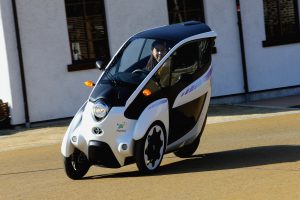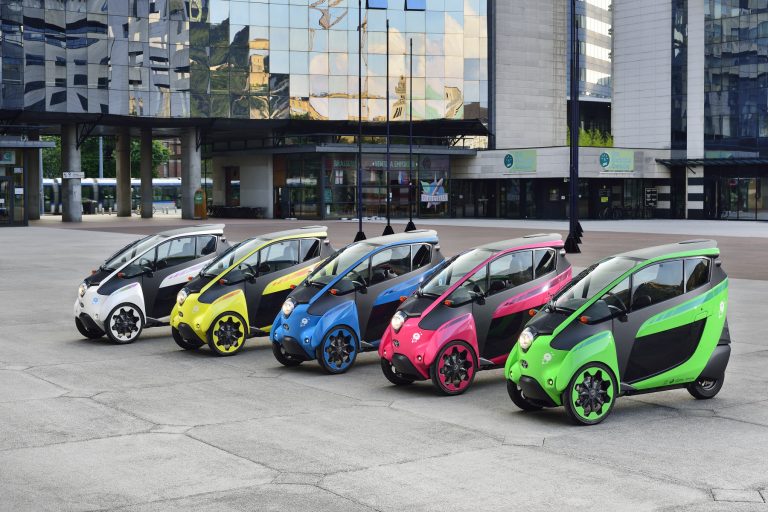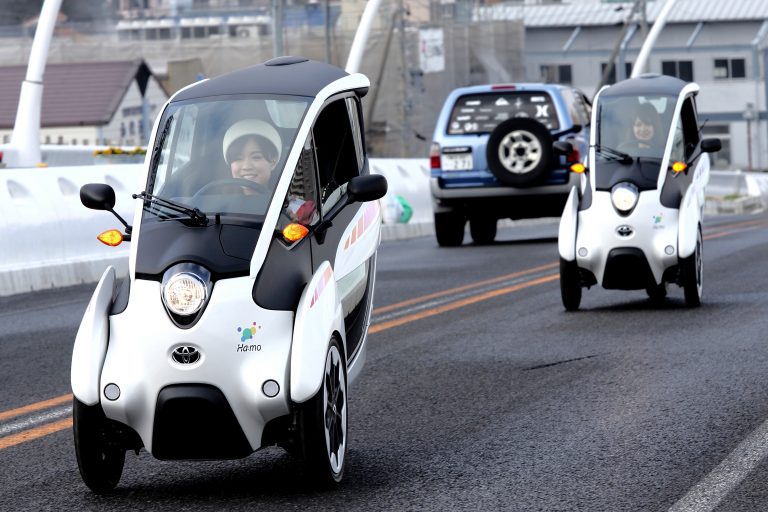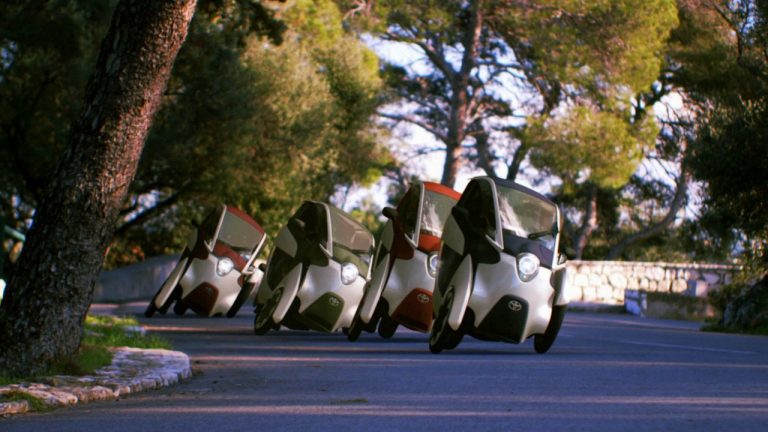Toyota Researches Business User Needs in Next Stage of i-ROAD Urban Electric Vehicle Project
Tomorrow Toyota will start the second round of its Open Road Project, designed to determine the commercial potential of the i-ROAD, its ultra-compact, electric three-wheeled urban vehicle. The next phase of the research will involve businesses and members of the general public who will be loaned vehicles to test on the road in Japan, through to the end of March next year.
People will have use of the i-ROAD for a set length of time and their experiences as “test pilots” will help assess how the EV meets their mobility needs. Toyota will also test how different issues related to use of the i-ROAD can be addressed by planning and providing associated services in co-operation with partner companies, using a diverse range of technologies.
Round two of the programme will also help Toyota understand the i-ROAD’s market potential through vehicle loans to business operators. This will show the level of acceptability of the EV, how it performs in shared-use scenarios, and its suitability for different types of use.
As in the first round of the project, Toyota will gradually increase the number of locations where associated services, such as dedicated parking spots (some with charging point), are available. Additional services will be developed and trialled, as appropriate.
The progress of the validation project will be published from time to time on a dedicated web page at
Round one, which ended recently, saw 96 test pilots recruited from around 3,500 applicants. Their feedback included appreciation for i-ROAD’s easy-to-park quality and the greater freedom of travel it provided for some users.
Through these consumer trials, Toyota aims to study the best way to develop products and services that will build on i-ROAD’s key strengths and open up exciting new mobility opportunities.
For a full gallery of i-ROAD images click here.
Open Road Project overview
| General consumers | Business operators | |
| Trial period | 17 September 2016 to 31 March 2017 | |
| Trial area | Tokyo’s Shibuya and Setagaya Wards | Central Tokyo |
| i-ROAD vehicle type 2 | Mostly two-seaters3 | Mostly single-seaters |
| Main target | Households with young children | Companies that do not own company cars, or companies that own company cars but want to have a variety of cars for different uses |
| Number of vehicles | Two-seaters: 4 vehicles | Single-seaters: 5 vehicles |
| Loaning period | 2 weeks to 1 month | |
| Associated services | (1) Exclusive parking spots (some offering charging)⇒Narrow, empty spaces in city centres that are generally not used will be explored as parking spots. A service for users to easily search for and reserve parking spots using a dedicated smartphone application will be available. Approximately 200 spots are currently available, mostly in Shibuya, Setagaya, and Minato wards.(2) New service for enhancing convenience⇒Trial of a dedicated charging module that provides information useful for daily life, for example, converting charging time into electricity usage. | |
1 Round one of the Open Road Project ran from July 2015 to July 2016.
2 Vehicle types may be switched according to the trial requirements of the participating general consumers and business operators.
3 Created by partially modifying the single-seater, this vehicle meets the application conditions of the Ultra-Compact Mobility Certification System of the Ministry of Land, Infrastructure, Transport and Tourism.
Verification testing utilising this system, jointly carried out with Shibuya and Setagaya wards in Tokyo.






